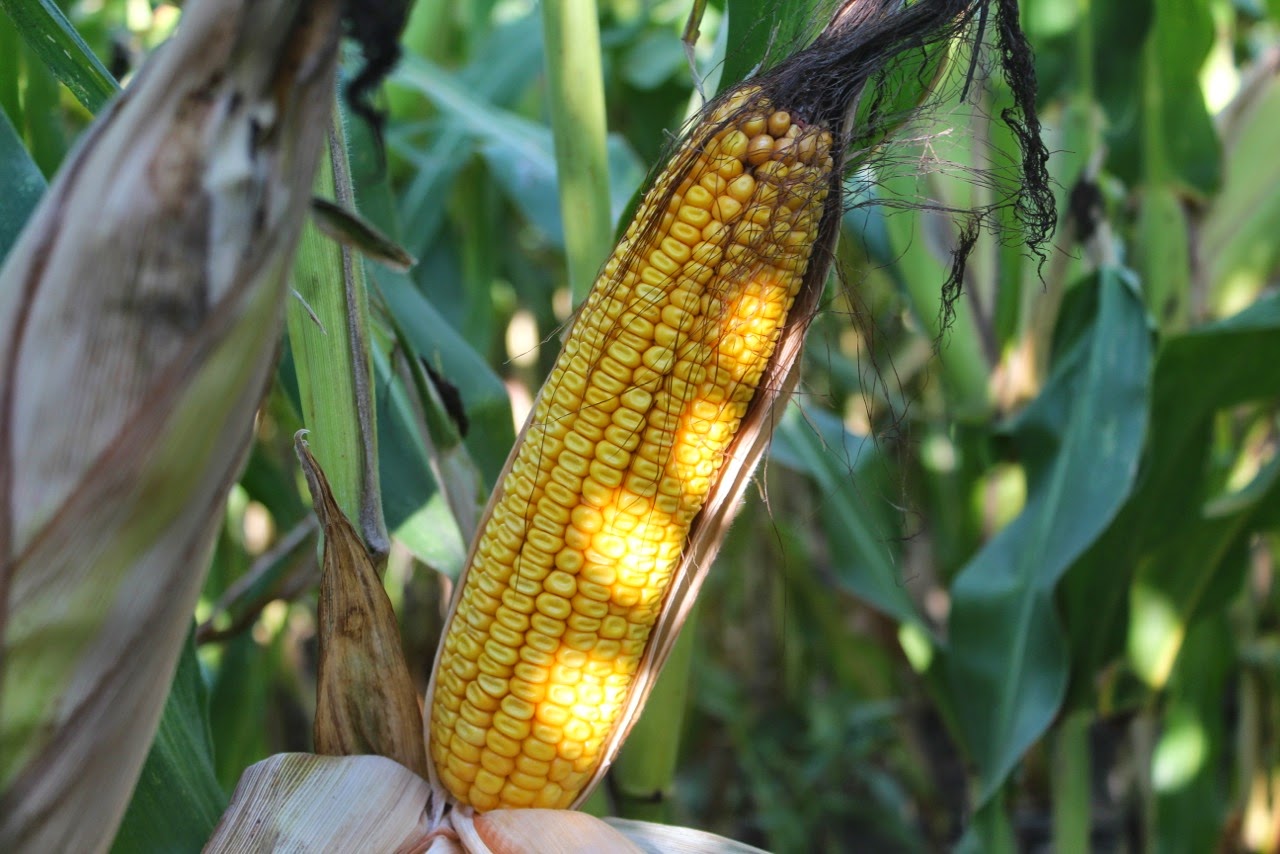By: Morgan Zumpfe
The
inevitable has happened. The first day of fall (September 23rd) has transpired,
so summer is officially over. I have moved into a new house, reunited with all
of my friends, had my first test, enjoyed the cooler weather, and watched the
Huskers play a couple of games (how about that win against Miami?!). I have
also transitioned from being a full-time intern into being a fulltime student as
well as being a part-time intern. I enjoy my afternoons away from campus at the
Nebraska Corn Board (NCB). It is during these afternoons that I find myself
reflecting on my summer, and thinking about how lucky I have been to get so
many different experiences through NCB thus far. I would like to share some of these
experiences with you in hopes that your son or daughter, niece or nephew,
grandchild, friend, neighbor, or even yourself finds them intriguing and looks
into getting involved with a NCB internship position.
Here are some of the
activities I have gotten to partake in during the last couple of months:
Flex Fuel Promotions:
Summer is a very busy season for NCB because it is a prime time to promote
American-made Ethanol. I assisted our biofuels development director, Kim Clark,
in many E85 and Flex Fuel Friday promotions. This means that we would go out to
a community fuel station and have a discounted price for a certain blend of
fuel for a couple of hours. For instance, a popular promotion that we did in
Omaha was a gallon of E85 for 85 cents. We would do this for a couple of hours
in the morning, move to a new location, and do a couple of hours in the
afternoon. People loved this because it is not an everyday occurrence that you
can fill up your flex fuel vehicle (FFV) for $20. I enjoyed getting to talk to
the public about the pros of ethanol, helping people determine whether they have
a FFV or not, controlling traffic, and implementing surveys for further research.

Corn Congress: This
was by far one of the highlights of my summer. I helped lead a group of young
leaders in agriculture out to Washington, D.C for a week in July. You can read
about my full experience
here.
Agribusiness Tours:
Meeting new people is one of my favorite things about this internship. Everyone
has a different story to tell and advice to give. I got to meet a whole group
of influential professionals on a trip to Omaha with the
Nebraska Agribusiness
Club. We got to tour a lot of interesting businesses, and it helped me get
a better idea of different opportunities out there for when I graduate. I think
that getting experiences like this where you are forced to get out of your
comfort zone and do something new is vital towards growing as a person and a
professional. You can read about the trip in full
here.
.jpg)
Don’s Retirement
Dinner: Getting to know former executive director of NCB, Don Hutchens, has
been a rewarding part of working at NCB. I first met Don when we traveled
together to Washington, D.C. for Corn Congress last summer and got stranded
overnight in Detroit the day it went broke. Since interning at NCB, I have been
able to watch the transition between Don, 27 year executive director, step down
and Kelly Brunkhorst, former research director, take the lead. I got to help a
little bit with Don’s retirement dinner, and it was great to be a part of a
well-deserved celebration.
 |
| Taiwanese trade group learning about DDGs |
.jpg) |
| Checking out Gavilon's trade floor |
Industry Tours: One
of the great things about NCB is that it has so many connections. One of them
is the
U.S. Grains Council (USGC). A group
of Taiwanese agricultural leaders got the chance to witness different aspects
of American agriculture through USGC and spend two days in Nebraska. I got the
opportunity to share my pride, Nebraska agriculture, with the Taiwanese
delegation. I also learned quite a bit along the way. The first day, we went
west. We toured Alan Tiemann’s farm by Seward, Aurora Cooperative’s Corporate
Office and Grain Terminal, and Chief Ethanol in Hastings. The second day, we
went east. We started out the day in Lincoln at Lincoln Inspection Service, and
then set out for Omaha. In Omaha we visited Ag-Processing Inc., Gavilon, TSL
Terminals, and The DeLong Company. The Taiwanese delegates were very excited
with everything they saw and have a better understanding the process in which
grain travels from the farm to the different end users.
 State Fair:
State Fair: I got
the chance to spend a lot of time in Grand Island at the State Fair. One of the
things that I got to help with is volunteering at the new
Raising Nebraska exhibit. I am so
excited for our state to have gained such a cool exhibit to showcase and teach
consumers and producers about agriculture. There is a lot of potential for this
new building, and it will be great to see how it is utilized. Another thing I
got to help with was the 4-H & FFA BBQ with the Nebraska Soybean Board and
Nebraska Pork Producers. We served 2,100 meals in a little over 2 hours to 4-H
and FFA members and their families. Let’s just say, I’m pretty good at serving
coleslaw now
.

Husker Harvest Days:
Most of you all know that Husker Harvest Days was kind of a mess this year due
to lots and lots of rain. However, I got lucky and was able to make it out to
Grand Island on Tuesday. Our booth’s theme was “
Take
a Second for Safety.” It was fun to interact with all of the farmers and
families going through. We educated producers on the proposed
WOTUS
regulations and had a raffle for two grain rescue tubes to be given away to
Nebraska fire departments. The winners were Cedar Rapids Volunteer Fire
Department and Newcastle Volunteer Fire Department.
 Crop Progress:
Crop Progress: Throughout
the growing season, I have kept the Corn Crop Progress reports in full swing. I
correspond with FFA chapters who send me pictures of the current corn crop in
their area. I have been uploading those pictures to our
Flickr
page,
Facebook,
and even
Pinterest. Also, I
send out Crop Progress reports on a bimonthly basis. I am really excited for
harvest to get going to see some beautiful fall pictures. Being in charge of
this program has taught me a lot about posting and evaluating social media
posts and has been fun as well.
Career Fair: The
next thing on my To-Do list is to prepare for the University of Nebraska-Lincoln,
College of Agricultural Sciences and Natural Resources fall career fair. It is
on Thursday, October, 2
nd. NCB staff, including myself, will be
there talking to students about internship opportunities. If any of these
activities that I previously mentioned in my summer recap sound interesting at
all, come talk to us! We are excited to meet with students and share the
opportunities that the Nebraska Corn Board has to offer. NCB has four other
internships throughout the nation and one international internship, all of
which you can learn about
here.
Although it is sad to see summer
end, fall is my favorite season for many reasons. Some of them include:
pumpkin-spiced everything, Husker football games, perfect weather, harvest time,
and a season for giving thanks. I believe that we have a lot to be thankful for
here in Nebraska, and I am thankful for the experiences and friendships I have
made through the Nebraska Corn Board.
 Access the National publication for Crop Progress and Condition tables at:
http://usda.mannlib.cornell.edu/usda/nass/CropProg//2010s/2014/CropProg-09-29-2014.pdf
Access the National publication for Crop Progress and Condition tables at:
http://usda.mannlib.cornell.edu/usda/nass/CropProg//2010s/2014/CropProg-09-29-2014.pdf






.jpg)

.jpg)





.jpg)












 Global food prices fell to their lowest level in four years as all major food sectors declined during August with the exception of meat, the United Nations said on Thursday.
Global food prices fell to their lowest level in four years as all major food sectors declined during August with the exception of meat, the United Nations said on Thursday.







